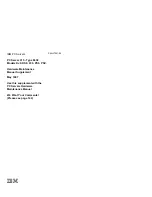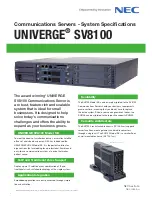
103
Chapter 7: Troubleshooting and Support
•
Adequate power supply: Make sure that the power supply provides adequate power to
the system. Make sure that all power connectors are connected. Refer to the Supermicro
website for the minimum power requirements.
•
Proper software support: Make sure that the correct drivers are used.
If the system becomes unstable before or during OS installation, check the following:
•
Source of installation: Make sure that the devices used for installation are working properly,
including boot devices.
•
Cable connection: Check to make sure that all cables are connected and working properly.
•
Use the minimum configuration for troubleshooting: Remove all unnecessary components
(starting with add-on cards first), and use the minimum configuration (but with a CPU and
a memory module installed) to identify the trouble areas.
•
Identify a bad component by isolating it. Check and change one component at a time.
•
Remove a component in question from the chassis, and test it in isolation. Replace it
if necessary.
•
Or swap in a new component for the suspect one.
•
Or install the possibly defective component into a known good system. If the new system
works, the component is likely not the cause or the problem.To find out if a component
is good, swap this component with a new one to see if the system will work properly.
If so, then the old component is bad. You can also install the component in question in
another system. If the new system works, the component is good and the old system
has problems.
















































